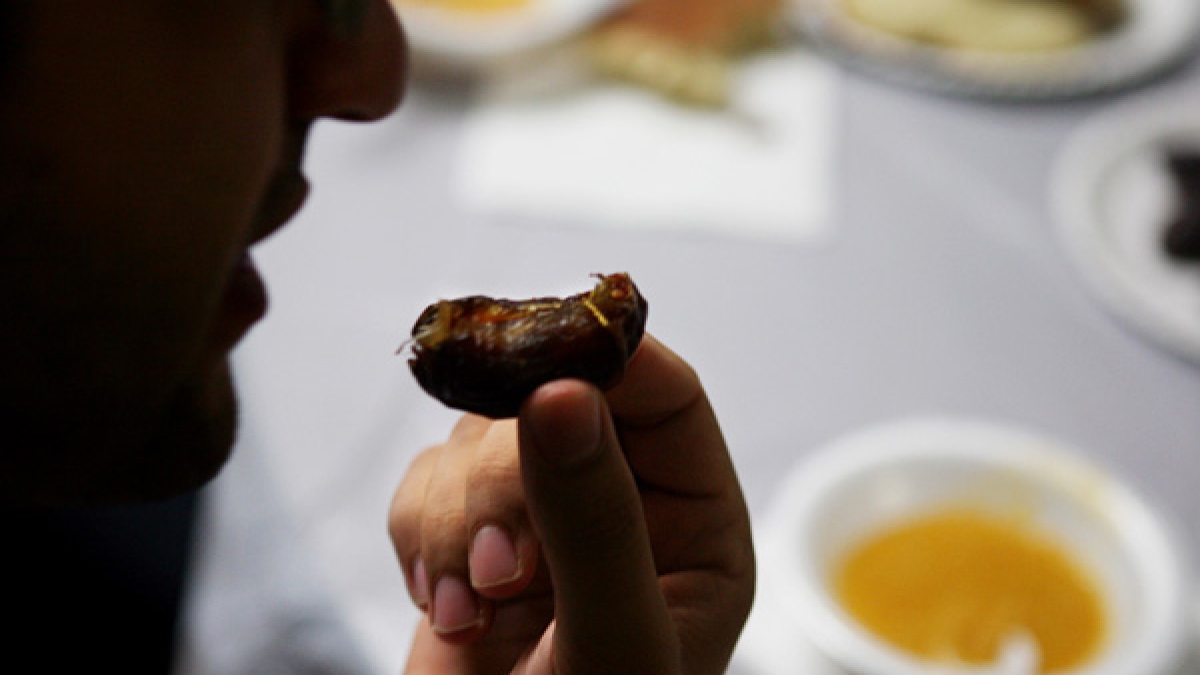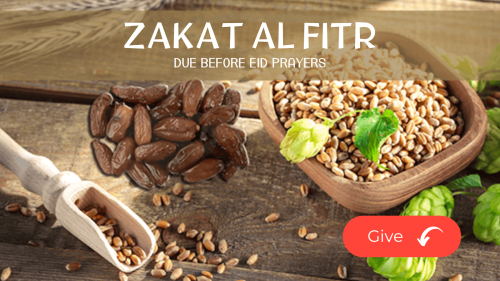Eating healthy in Ramadan

With the fast of Ramadan upon us, we thought it might be useful to look at ways of trying to maintain a healthy diet while fasting. Fasting for 12 to 24 hours or more can lead to dizziness and fatigue and a lowering of metabolic rate as a means of conserving calories or energy. Here are some simple guidelines to make sure that your diet remains balanced and healthy during this fasting period:
Don't skip breakfast!
Even though the thought of sleep may be far more appealing than waking up to force down some food, don't skip breakfast. Breakfast is the most important meal of the day.
For years, research has shown that breakfast (the breaking of the overnight fast) provides the essential nutrients and energy needed for concentration while keeping hunger symptoms like headaches, fatigue, sleepiness and restlessness at bay. In addition, it also gets our metabolic rates up and going - it is therefore vital to ensure an adequate intake at breakfast time.
Eat a wide variety of foods
Especially now, when your daily intake is limited to two meals per day, you need to put extra effort into including foods from all the food groups.
Our bodies need at least 40 different nutrients every day to ensure that we grow adequately and maintain good health. Although most foods contain more than one nutrient, no single food provides all the necessary nutrients.
Moreover, foods have benefits that can't be replicated by a pill. It is thus important to eat a wide variety of foods every day, so as to ensure that we get all of these nutrients. The way to ensure variety, and with it a well-balanced diet, is to select foods each day from each of the five food groups:
-
Breads, cereals and other grain products
-
Fruit and vegetables
-
Meat, fish and poultry
-
Milk, cheese and yoghurt
-
Fats and sugars (these contain very little nutrients and are high in calories and therefore their intake should be limited).
Use low glycemic foods at breakfast to help control blood sugar levels
Carbohydrates are now classified according to their glucose response or glycemic index (GI). The GI measures how fast the carbohydrate of a particular food is converted to glucose and enters the bloodstream. It therefore tells you which carbohydrate foods satisfy hunger for longer.
The lower the number of the GI, the slower the food is converted to sugar and the better it is. Selecting low GI foods therefore helps maintain normal blood sugar control, minimizes hunger pangs and satisfies appetite without providing excess calories.
Also, by controlling blood sugar levels, you prevent excessive eating binges as a result of low blood sugar levels. Remember to include low GI foods at each meal, and to avoid eating high GI foods on their own, but rather to mix them with low GI foods, which will give an intermediate GI overall.
Be aware of your cooking methods
By making small changes in your cooking habits, you can create great tasting foods that are also healthy for you. Although special recipes are an important part of family tradition, many of those treasured favorites have too high a fat content for today's generation of health-conscious cooks. You do not have to give up those old favorites - convert them!
Here's how:
Always trim off all excess fat from before cooking or use veal, venison, chicken and soya as lower fat options. Remove poultry skin before or after cooking. Choose light meat (breast) instead of dark meat (leg, wing).
Cut down on fat:
-
Cook onions in a small amount of water or even vegetable stock rather than oil or butter.
-
Use non-stick frying pans and non-stick sprays (like Spray 'n Cook) rather than oil or margarine if frying.
-
Bake, grill or roast foods rather than frying.
-
Cook roasted meat or poultry on a wire rack so that the fat can drip off.
-
Vegetables should be steamed or boiled with as little cream or margarine as possible.
-
When preparing rice, noodles and other grains, season with herbs, spices and broths rather than added fat.
-
Prepare soups, gravies and sauces in advance, so that they can be refrigerated and the layer of fat that forms on top removed.
-
Experiment with herbs and spices to add flavor and zest to low-fat cooking. Herbs, such as basil, bay leaf, oregano, or rosemary adds distinctive flavors and colors to meat and vegetables. Spices, like cinnamon, ginger and nutmeg enhance the sweet taste of foods, and seasoning blends, such as chili powder, curry powder provide a complex array of flavors.
Avoid taking in too much salt
-
Use garlic, dry mustard, pepper, onions, mushrooms and tomatoes to add flavor to meat and vegetables.
-
Add sliced lemon or lemon juice to white meats and fish.
-
Use herbs and spices instead
Make healthy changes to recipes
Use your regular recipes, but start cutting the fat in half. If a recipe calls for cream or whole milk, use evaporated or fresh skim milk. If a recipe calls for a whole egg, use two egg whites, etc.
Eat enough fiber-rich carbs
These foods provide the body with energy. They are often incorrectly labeled as fattening and unnecessarily limited. They are rich in vitamins belonging to the B group, and are an excellent source of fiber. Bear in mind that hi-fiber foods have a greater effect on satiety than their low-fiber counterparts. Examples of foods high in fiber include brown rice, whole-grains, fresh fruit and raw veggies.
Remember your fruits and vegetables
Fruit and vegetables add color and variety to the menu. They are often termed our 'protective' foods as they help the body fight off sickness and disease. This is because they are rich sources of a variety of vitamins and minerals. An added benefit is that they are relatively low in calories and also contribute to our daily fiber intake.
Drink sufficient fluid
Always include water in your diet and limit your intake of caffeine-containing beverages. Caffeine is a diuretic and will not provide adequate hydration.
We all know that maintaining a balanced diet by eating healthily has a vital influence on your well being. Try following the above principles so that this fast period does not sway too much from the principles of good nutrition.
Source: iAfrica.com South Africa
Related Suggestions
www.mufasser.com/healthyramadan
Our beloved Prophet was Vegetarian most of the time and never used to overeat. There was no glycemic index at the time but His selection of the food was excellent that can be compared as unique diet.He loved the food that has good carbs,good fat(Olive oil)and protein.
Suhoor(breakfast)is Sunnah(eating good breakfast is better than eating lot in dinner).Sitting posture, filling your stomach with proportions(solids,liquids and empty), Eating slowly and so on. When we follow these with Sunnah, InshaAllah we will be healthy. Look at the benefits of Barley, some fruits, Miswaak, blackseed, honey, Olive Oil etc. that Prophet liked.
Alhamdullilah our religion-ISLAM- is a complete guide of LIVING. It has guidelines and rules for everything...and what you eat and drink, it is reflected from you as it affects your body built, character and your actions.
The dietary contents and way of eating and drinking are important scientifically and spirituality. Research have been done and it is shown they are similar to Sunnah with lot of benefits.

















